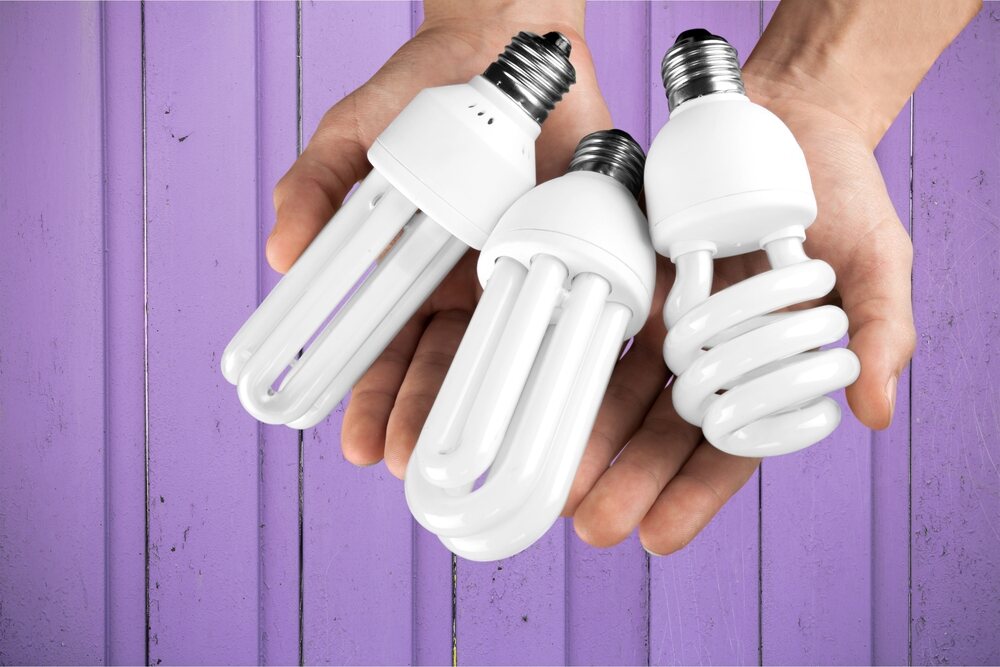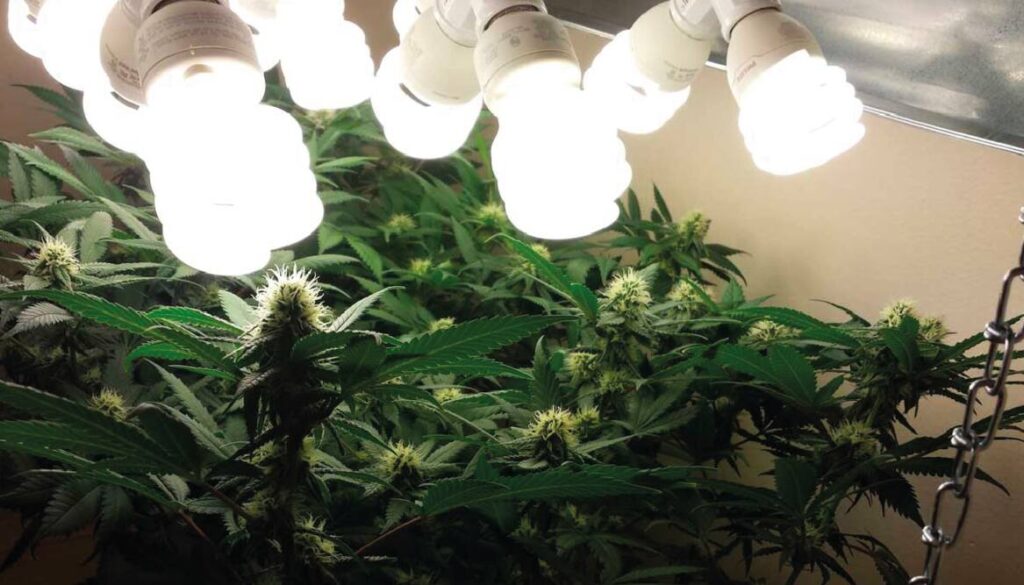The Best Fluffy Pancakes recipe you will fall in love with. Full of tips and tricks to help you make the best pancakes.

Are CFL Lights Good for Growing Weed?
Growing cannabis at home can be a rewarding and enjoyable experience, but one of the first questions you’ll face is choosing the right grow light. Among the options out there, CFL (Compact Fluorescent Lamps) lights are often recommended for beginners or budget-conscious growers. But are CFL lights really up to the task of growing quality cannabis? Let’s explore everything you need to know to decide if CFL lights are the right fit for your grow setup.
What Are CFL Grow Lights?
Understanding Compact Fluorescent Lamps (CFLs)
CFLs are a type of energy-efficient lighting commonly found in homes. They’re known for their spiral shape and compact design, which makes them great for smaller spaces. CFLs produce light by passing an electric current through a gas, creating ultraviolet light that’s then converted to visible light by the phosphor coating inside the bulb. For growing weed, CFLs have gained popularity because they’re affordable and available in most hardware stores.
CFL vs. LED: How Do They Compare?
LED lights are another popular choice, and while they can be pricier, they often outperform CFLs in terms of energy efficiency and light output. LEDs also last longer and generate less heat, meaning less risk of burning your plants. CFLs, on the other hand, are more budget-friendly and can be effective for smaller grows or as supplemental lighting.
Energy Efficiency of CFL Lights
CFLs are more energy-efficient than older bulbs like incandescents, but they don’t quite match up to LEDs in terms of efficiency. While they do produce some heat, it’s generally manageable, especially in small grow spaces. If you’re starting on a budget and want to save on initial costs, CFLs are worth considering.

Benefits of Using CFL Lights for Growing Weed
Cost-Effectiveness of CFL Lights
One big plus of CFLs is their affordability. They’re cheaper to buy than most LEDs or HID lights, making them a good option for new growers testing the waters. You don’t need a big upfront investment, so you can set up a basic grow without breaking the bank.
Low Heat Output for Indoor Growing
CFLs produce less heat than many other types of grow lights, which is ideal for small spaces. You won’t need an expensive cooling system, and there’s less risk of heat stress on your plants. This also makes it easier to position the lights closer to your plants, maximizing light exposure without worrying about burns.
Suitability for Small Grow Spaces
If you’re working with limited space—like a closet or a small tent—CFLs are a solid choice. Their compact size and low heat make them perfect for confined areas. Plus, you can easily adjust their placement as your plants grow, ensuring every inch of your plant gets the light it needs.
Drawbacks of CFL Lights in Cannabis Cultivation
Limited Light Intensity and Penetration
One downside of CFLs is their limited light intensity. CFL bulbs don’t penetrate as deeply as LEDs or HID lights, meaning your plants’ lower leaves may not get enough light. This could lead to less dense buds or slower growth in some cases. CFLs are best suited for smaller plants or early growth stages.
Challenges in Flowering Stage with CFLs
CFLs are generally more effective during the vegetative stage when your plants need less intense light. However, the flowering stage demands higher light intensity for optimal bud production, and CFLs might not deliver the necessary power. If you’re planning to flower with CFLs, be prepared for potentially lower yields.
Energy Consumption Compared to Other Lights
While CFLs are more efficient than traditional bulbs, they can still consume a fair bit of electricity, especially if you’re using multiple bulbs. In the long run, LEDs are likely to save you more on your energy bill. If energy costs are a concern, consider whether the savings on CFL bulbs balance out with the higher running costs.
CFL Lights and Growth Phases
Vegetative Phase: Advantages of CFLs
During the vegetative stage, plants focus on growing leaves and stems, and CFLs provide enough light for this growth. CFLs with a daylight spectrum (around 5000-6500K) are ideal for vegging as they closely mimic natural sunlight. Keep them close to the plants for the best results, around 2-4 inches away.
Flowering Phase: Are CFLs Effective?
CFLs aren’t known for their flowering power. While they can be used, results may not be as robust as with stronger lights like HPS or LEDs. For flowering, you might want to use a warmer spectrum CFL (around 2700K), but be prepared for smaller yields if CFLs are your sole light source.
Managing Light Cycles with CFLs
CFLs are easy to use with basic timers to control your light cycles. During veg, you’ll want an 18/6 light cycle (18 hours on, 6 hours off), while flowering requires a 12/12 cycle. CFLs work well with these schedules, and the low heat output means you can leave them on longer without overheating issues.
Tips for Growing Weed with CFL Lights
Positioning CFL Lights for Maximum Coverage
Since CFLs don’t have deep light penetration, you’ll need to position them carefully. Place the bulbs 2-4 inches above your plants and adjust as they grow. Surround your plants with multiple bulbs if possible to ensure even coverage.
Best CFL Wattage for Cannabis Growth
For growing weed, look for bulbs with a minimum of 100 watts per plant for decent results. The more watts, the better—150-200 watts can provide stronger growth and better bud development. Keep in mind that CFLs labeled as “equivalent wattage” aren’t the actual wattage; aim for the true wattage output.
Optimizing Lumens and Light Spectrum
Lumens measure the brightness of your bulbs, and for growing cannabis, you’ll want a good amount of lumens per square foot (around 3,000-5,000). As for the spectrum, use daylight (5000-6500K) for vegging and soft white (2700K) for flowering. This helps mimic natural sunlight’s shift across the seasons.
Comparing CFLs with Other Light Types
CFL vs. LED Grow Lights: Pros and Cons
LEDs are generally more efficient and powerful, but they’re also pricier. LEDs often produce better yields and save on energy costs over time, whereas CFLs are cheaper upfront but may need to be replaced sooner. Both work for beginners, but LEDs might be a better long-term investment.
CFL vs. HPS Lights for Cannabis Cultivation
HPS lights are popular for flowering due to their intense light output, resulting in bigger buds. However, they also produce a lot of heat, requiring more cooling equipment. CFLs don’t have the same flowering power but are far cooler and easier to manage for smaller grows.
Choosing the Right Light for Your Grow Space
Ultimately, your choice of light should depend on your budget, grow space, and goals. CFLs work great for small-scale growers or those on a budget. If you’re looking for bigger yields and can invest more, LEDs or HPS lights might be better options.
FAQ
Are CFL lights suitable for all stages of cannabis growth?
CFLs are effective for the vegetative stage but may not provide enough intensity for robust flowering. They’re better suited for early growth phases.
How much does it cost to run CFL grow lights?
Running CFLs is cheaper upfront, but they consume more energy than LEDs over time. Costs vary based on wattage and number of bulbs.
Can CFL lights produce quality buds?
CFLs can produce buds, but yields may be smaller than with more powerful lights. For best results, consider combining with other light types.
How close should CFL lights be to cannabis plants?
Keep CFL lights 2-4 inches away from plants for maximum light exposure. Adjust as plants grow to prevent burns.
Do CFL lights affect the cannabis yield compared to LEDs or HPS?
CFLs usually result in lower yields than LEDs or HPS lights, as they lack intensity and depth. They’re best for beginners or as supplemental lighting.
In short, CFL lights can work for growing weed, especially if you’re a beginner or working with a tight budget and limited space. While they may not produce the monster buds or high yields of other grow lights, CFLs are easy to use, affordable, and provide just enough light for small-scale home grows. If you’re looking to explore the world of cannabis growing without a major upfront investment, CFLs are a solid starting point.




